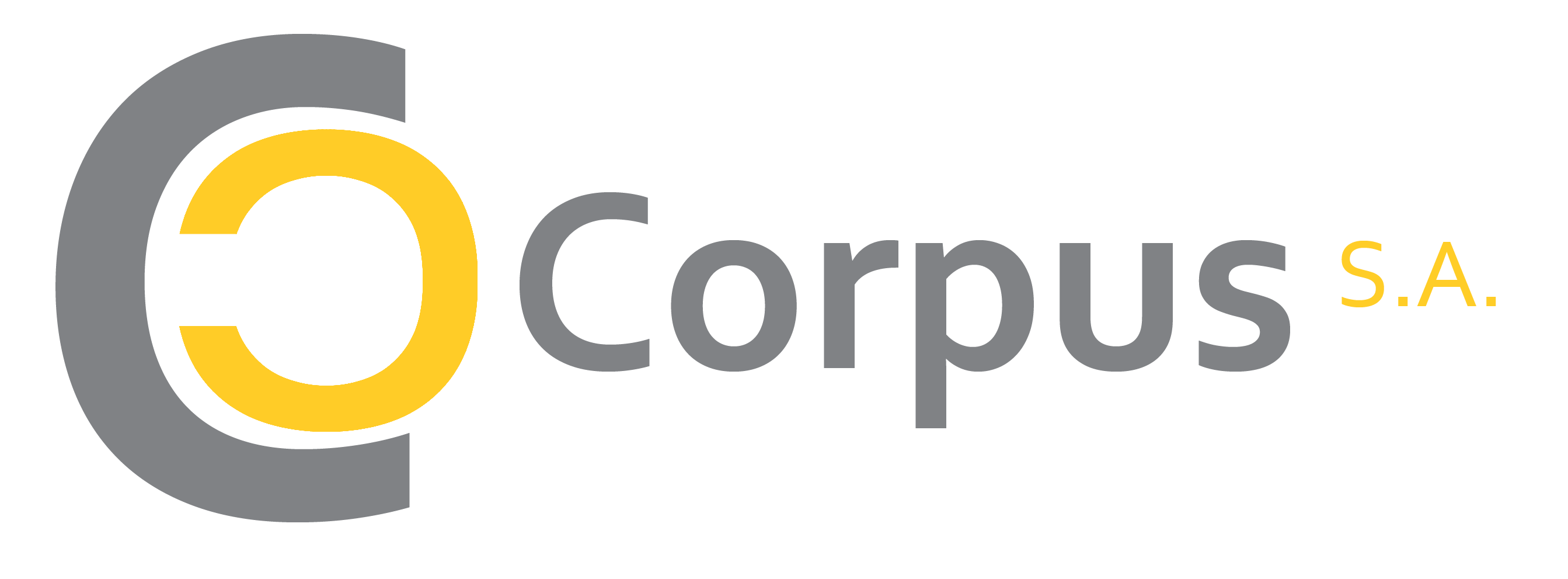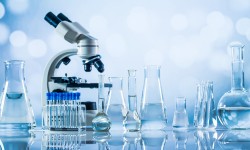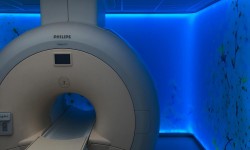
Στη βιομηχανία τροφίμων, η Σαλμονέλα αποτελεί ένα
σοβαρό πρόβλημα, προκαλώντας μια ευρέως διαδεδομένη βακτηριακή λοίμωξη γνωστή
ως σαλμονέλωση. Αυτό το γένος βακτηρίων αποτελεί σημαντική απειλή για τη
δημόσια υγεία παγκοσμίως, υπεύθυνο για περίπου 1,35 εκατομμύρια μολύνσεις,
26.500 νοσηλείες και 420 θανάτους ετησίως μόνο στις Ηνωμένες Πολιτείες. Στην
Ευρώπη, η Σαλμονέλα παραμένει σημαντική ανησυχία, καθώς το 2022 καταγράφηκαν
65.967 επιβεβαιωμένα εργαστηριακά κρούσματα σαλμονέλωσης στην ΕΕ. Ο ρυθμός ειδοποιήσεων
ήταν 15,5 κρούσματα ανά 100.000 κατοίκους, καθιστώντας την τη δεύτερη πιο
αναφερόμενη γαστρεντερική διαταραχή στην ΕΕ. Τα συμπτώματα περιλαμβάνουν
γαστρεντερίτιδα, κοιλιακούς κράμπες, αιματηρές διάρροιες, πυρετό, μυαλγίες,
πονοκέφαλο, ναυτία και έμετο. Αυτά τα νούμερα υπογραμμίζουν τη σημασία της
επαγρύπνησης και των κατάλληλων πρακτικών ασφάλειας τροφίμων για την πρόληψη
επιδημιών και την προστασία της δημόσιας υγείας. Η κυκλοφορία μολυσμένων
τροφίμων μπορεί να οδηγήσει σε σοβαρές συνέπειες όπως καθυστερήσεις στη
διαδικασία παραγωγής, ανακλήσεις προϊόντων, κλείσιμο εργοστασίων και ακόμη και
νομικές ενέργειες.
Οι πηγές τροφίμων για τη Σαλμονέλα περιλαμβάνουν κυρίως γάλα, αυγά, κρέας
(πουλερικά, βοδινό κρέας), λαχανικά και φρέσκα φρούτα. Πρόσφατες επιδημίες
υπογραμμίζουν τους συνεχιζόμενους κινδύνους. Το 2024, μια επιδημία σε πολλές
πολιτείες στις Ηνωμένες Πολιτείες που σχετίζεται με φρέσκο βασιλικό προκάλεσε
αρκετές ασθένειες. Παρομοίως, μια επιδημία το 2023 που συνδέθηκε με ωμό ζυμάρι
για μπισκότα προκάλεσε σημαντικές ανησυχίες για τη δημόσια υγεία. Το 2022,
σχεδόν 200 άτομα στην ΕΕ και το Ηνωμένο Βασίλειο αρρώστησαν λόγω επιδημίας
Σαλμονέλας που συνδέθηκε με μολυσμένα προϊόντα τροφίμων, με αρκετές νοσηλείες
και τουλάχιστον έναν θάνατο.
Οι καταναλωτές μπορούν να προστατευτούν από τη μόλυνση με Σαλμονέλα
ακολουθώντας καλές πρακτικές υγιεινής, όπως το πλύσιμο των χεριών με σαπούνι
και νερό πριν και μετά την επαφή με τρόφιμα, μετά τη χρήση της τουαλέτας και
αφού έρθουν σε επαφή με ζώα ή τα περιβάλλοντά τους. Είναι επίσης σημαντικό να
καθαρίζουν τακτικά τις επιφάνειες της κουζίνας, τα σκεύη και τις ξύλινες
επιφάνειες κοπής με ζεστό, σαπουνισμένο νερό. Η ασφαλής διαχείριση των τροφίμων
είναι κρίσιμη. Αυτό περιλαμβάνει τη διατήρηση του ωμού κρέατος, των πουλερικών,
των θαλασσινών και των αυγών ξεχωριστά από τα άλλα τρόφιμα για την αποφυγή
διασταυρούμενης μόλυνσης, το μαγείρεμα των τροφίμων στις κατάλληλες
θερμοκρασίες (για παράδειγμα, τα πουλερικά πρέπει να μαγειρεύονται σε εσωτερική
θερμοκρασία 74°C ή 165°F), και την αποθήκευση των ευπαθών τροφίμων
σε ψυγείο ή καταψύκτη μέσα σε δύο ώρες (ή μία ώρα αν η θερμοκρασία είναι πάνω
από 32°C ή 90°F).
Η οικονομική ζημιά για τις εταιρείες τροφίμων μπορεί να είναι τεράστια,
επηρεάζοντας τα έσοδα, τη φήμη, την αξία των μετοχών και τη συνολική
κερδοφορία. Για να μειωθούν αυτοί οι κίνδυνοι, είναι ζωτικής σημασίας οι
έγκαιροι και ακριβείς έλεγχοι για Σαλμονέλα στα τρόφιμα. Η εφαρμογή αυστηρών
πρωτοκόλλων ελέγχου βοηθά όχι μόνο στην πρόληψη επιδημιών, αλλά και στη
διασφάλιση της εμπιστοσύνης και ασφάλειας των καταναλωτών.
Προκλήσεις των Παραδοσιακών Μεθόδων: Καλλιέργεια
Βακτηρίων & Ανοσολογικές Δοκιμές
Ιστορικά, η δοκιμή για Salmonella spp. στη βιομηχανία τροφίμων βασίζεται σε
χρονοβόρες και απαιτητικές μεθόδους, όπως οι μέθοδοι καλλιέργειας και οι
ανοσολογικές δοκιμές. Οι μέθοδοι καλλιέργειας, ενώ θεωρούνται ως το χρυσό
πρότυπο και η αναφορά για τη διάγνωση, περιλαμβάνουν μεγάλες περιόδους
επώασης—μερικές φορές έως και 5 ημέρες—πριν ληφθούν τα αποτελέσματα. Επιπλέον,
η ερμηνεία των αποτελεσμάτων από τις δοκιμές καλλιέργειας μπορεί να είναι
υποκειμενική, εισάγοντας πιθανά σφάλματα.
Ομοίως, οι μέθοδοι ανοσολογικών δοκιμών, αν και ταχύτερες από τις μεθόδους
καλλιέργειας, εξακολουθούν να έχουν περιορισμούς. Αυτές οι μέθοδοι μπορεί να
χρειάζονται έως και 2 ημέρες για να δώσουν αποτελέσματα και ενδέχεται να
στερούνται εξειδίκευσης λόγω παρεμβολής από τη σύνδεση αντισωμάτων.
Γιατί η Real-Time PCR είναι μια
υποσχόμενη εναλλακτική στη Μικροβιολογία Τροφίμων;
Λαμβάνοντας υπόψη τα μειονεκτήματα αυτών των μεθόδων, η εφαρμογή των ταχέων
μεθόδων μικροβιολογίας, ειδικότερα της δοκιμής DNA μέσω της Real-Time PCR, έχει αναδειχθεί ως μια επαναστατική
μέθοδος για την ανίχνευση της Salmonella spp.
- Βελτιωμένη Ευαισθησία (LOD)
Η τεχνολογία Real-Time Polymerase Chain Reaction (PCR) προσφέρει μια γρήγορη και εξαιρετικά αξιόπιστη μέθοδο για την ανίχνευση χαμηλών επιπέδων Salmonella σε διάφορους τύπους τροφίμων με εξαιρετική εξειδίκευση. Η Real-Time PCR λειτουργεί με την ενίσχυση του DNA του παθογόνου στόχου — σε αυτήν την περίπτωση, της Salmonella — με αξιοσημείωτη ευαισθησία. - Μικρότερος Χρόνος Απόκρισης (TAT)
Οι μέθοδοι βασισμένες σε PCR μπορούν να ανιχνεύσουν το DNA της Salmonella εντός ωρών, μειώνοντας σημαντικά τον χρόνο που απαιτείται για την απόφαση. Αυτή η ταχύτητα είναι κρίσιμη για τη λήψη αποφάσεων σε θέματα ασφάλειας των τροφίμων, επιτρέποντας γρηγορότερες αντιδράσεις σε πιθανά περιστατικά μόλυνσης και μειώνοντας τον κίνδυνο εκτεταμένων επιδημιών. Οι μέθοδοι PCR είναι εξαιρετικά ευαίσθητες και εξειδικευμένες, ικανές να ανιχνεύσουν ακόμη και χαμηλά επίπεδα Salmonella σε διάφορους τύπους δειγμάτων, όπως τρόφιμα, νερό και περιβαλλοντικά δείγματα. Επιπλέον, οι δοκιμές PCR ενισχύουν την ακρίβεια της ανίχνευσης της Salmonella. Οι παραδοσιακές μέθοδοι ενδέχεται να δώσουν ψευδώς αρνητικά αποτελέσματα λόγω της παρουσίας ανταγωνιστικών μικροοργανισμών ή υπο-ιδανικών συνθηκών ανάπτυξης. Η PCR παρακάμπτει αυτά τα προβλήματα επικεντρώνοντας απευθείας στο γενετικό υλικό της Salmonella, εξασφαλίζοντας αξιόπιστη ανίχνευση.
Εφαρμογή Real-Time PCR με ισοδύναμη
επικύρωση μεθόδου
Η υιοθέτηση ταχέων μεθόδων μικροβιολογίας, όπως η PCR, απαιτεί ωστόσο αυστηρή επικύρωση και πιστοποίηση
για να εξασφαλιστεί η αξιοπιστία και αποδοχή τους. Η πιστοποίηση τρίτων μερών
παίζει κρίσιμο ρόλο σε αυτήν τη διαδικασία. Οργανισμοί πιστοποίησης, όπως η MicroVal και η AOAC INTERNATIONAL, παρέχουν
ανεξάρτητη επικύρωση αυτών των μεθόδων σύμφωνα με διεθνή πρότυπα όπως το EN ISO 16140. Αυτή η διαδικασία επικύρωσης διασφαλίζει ότι οι μέθοδοι PCR πληρούν αυστηρά κριτήρια για ακρίβεια,
ευαισθησία και αναπαραγωγιμότητα. Αυτή η διαδικασία περιλαμβάνει αυστηρές
αξιολογήσεις, όπως δοκιμές συμπερίληψης/αποκλεισμού, συνέπεια προϊόντος,
σταθερότητα, ανθεκτικότητα και μελέτες σε διάφορα δείγματα. Η πιστοποίηση αυτή
ενισχύει την αξιοπιστία των μεθόδων δοκιμών και προσφέρει στις εταιρείες και τα
εργαστήρια εμπιστοσύνη στα πρωτόκολλα δοκιμών τους, βοηθώντας τελικά στην
προστασία της δημόσιας υγείας και τη διατήρηση της εμπιστοσύνης των
καταναλωτών.
InviScreen Salmonella spp κιτ ανίχνευσης : μια επαναστατική λύση για την ασφάλεια των τροφίμων
Το InviScreen Salmonella spp κιτ ανίχνευσης έχει σχεδιαστεί ειδικά για την ποιοτική ανίχνευση της Salmonella spp. σε δείγματα τροφίμων. Αυτή η κορυφαία λύση στη μοριακή βιολογία προσφέρει στα εργαστήρια και τους ερευνητές ένα γρήγορο, εύκολο στη χρήση και πλήρες κιτ για την ανίχνευση της Salmonella spp. σε διάφορες κατηγορίες τροφίμων ως εναλλακτική για το ISO 6579. Η μέθοδος περιλαμβάνει μια απλοποιημένη διαδικασία ενίσχυσης, γρήγορη εξαγωγή DNA σε λιγότερο από 20 λεπτά και πλήρη ανίχνευση σε λιγότερο από 10 ώρες για τα περισσότερα δείγματα. Η μέθοδος InviScreen® είναι πιστοποιημένη από το AOAC-Research Institute στο πλαίσιο του προγράμματος Performance Tested MethodsSM.
Βασικά Χαρακτηριστικά:
• Γρήγορος
χρόνος απόκρισης: ανίχνευση Salmonella spp. σε λιγότερο από 10
ώρες
• Ευκολία στη χρήση: Ο γρήγορος αντιδραστήρας λύσης παρέχει έτοιμο DNA για PCR σε λιγότερο από 20 λεπτά.
• Ευαισθησία και αξιοπιστία: υποβλήθηκε σε αυστηρή επιστημονική και
συστηματική αξιολόγηση από το AOAC’s PTM.
• Υψηλή εξειδίκευση: δοκιμασμένο σε πάνελ περισσότερων από 100
σεροτύπους Salmonella
και 30 μη Salmonella
ειδών.
Επικυρωμένο από το AOAC Real-Time PCR για γρήγορη ανίχνευση Salmonella spp. σε κρέας, πουλερικά, γαλακτοκομικά, αυγά και φρέσκα προϊόντα σε λιγότερο
από 10 ώρες.
Αγκαλιάζοντας το μέλλον, αξιόπιστα
Στο πεδίο της ασφάλειας των τροφίμων, η σημασία της γρήγορης και ακριβούς
δοκιμής για την Salmonella δεν μπορεί να υποτιμηθεί. Η υιοθέτηση καινοτόμων τεχνολογιών, όπως η Real-Time PCR, επιτρέπει στις
εταιρείες τροφίμων και τα εργαστήρια δοκιμών να μειώσουν προληπτικά τους
κινδύνους που θέτει αυτός ο επιβλαβής παθογόνος μικροοργανισμός.
Χρησιμοποιώντας την ταχύτητα, την ακρίβεια και την αποδοτικότητα της Real-Time PCR, οι επιχειρήσεις
μπορούν να τηρήσουν τις δεσμεύσεις τους για ποιότητα και ασφάλεια,
προστατεύοντας ταυτόχρονα την υγεία των καταναλωτών και τα οικονομικά τους
αποτελέσματα.





